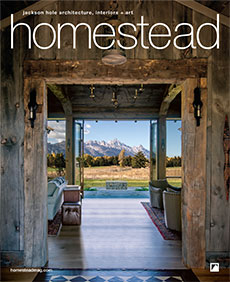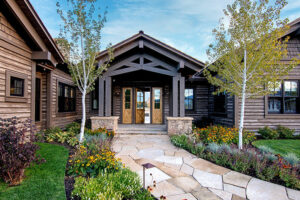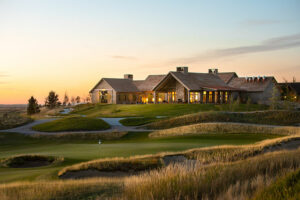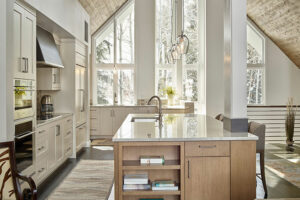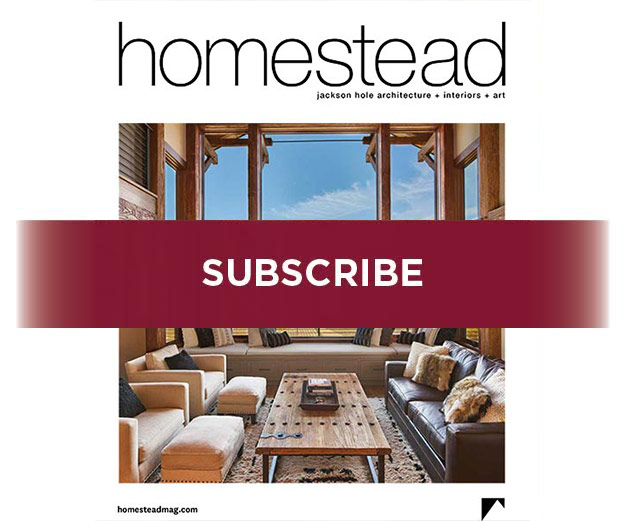Art of Discovery
+ Story by Meg Daly
A new species has taken root in Jackson Hole. Neither plant nor animal, it has sprouted up in diverse habitats along the county pathways system. This newcomer is public art.
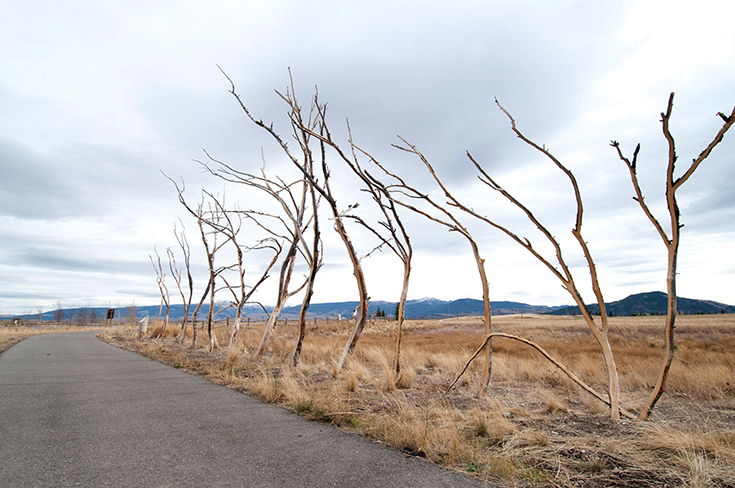
Ben Roth: At the entrance to Teton Village stands a line of denuded tree branches forming a subtle wave pattern. Jackson artist Ben Roth harvested limbs from a single beetle-killed whitebark pine. The wave can be seen as the toppling of majestic pine forests, as mountain pine beetles overpopulate due to global warming. Roth’s wave of branches also expresses a stark beauty as it frames and slices the sky. An ode to the whitebark by Terry Tempest Williams is etched on a nearby viewing bench. Roth says, “Trees are incredible. They have a huge impact on us visually and experientially.”
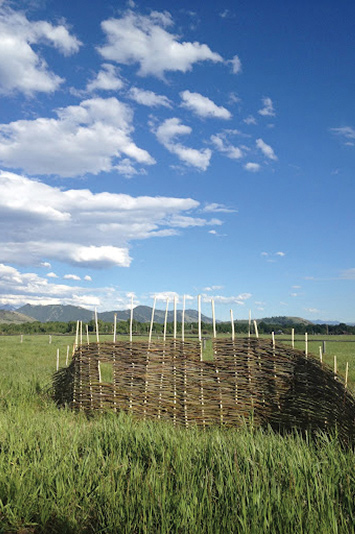
Meghan, Kathleen and Nora Hanson: Take a step back in geologic time on the pathway from the Stilson Ranch parking area to the Wilson School. A six-part installation by Driggs, Idaho-based sister/designer team Meghan, Kathleen and Nora Hanson maps major mass extinction events in the Earth’s history. This willow sculpture represents the Late Devonian event, which nearly wiped out reef-building animals like coral.
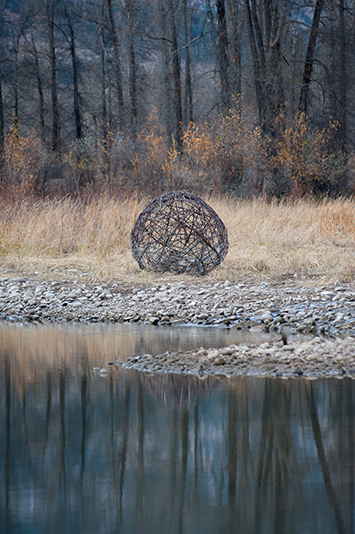
Valerie Seaberg: Northwest of the Wilson boat launch, an 8-foot woven orb floats atop a pond. The sculpture was commissioned by Jackson Hole Public Art and the Rendezvous Lands Conservancy to celebrate the beginning phases of a public park. “We have a new place we get to ‘be’ as a community,” Jackson artist Valerie Seaberg says. “We are for it; it is for us.” Seaberg often uses willow for her sculptures. “We are always looking up in this valley,” she says. “But we may miss diverse, vibrant riparian zones that offer such stunning colors.”
Bumping into a piece of art on a bike ride or a stroll around town feels serendipitous. But the artwork on the pathways system arose from careful planning by Carrie Geraci, the director of Jackson Hole Public Art, in conjunction with JH Community Pathways, 1% for the Tetons and other organizations. Designed to expand our understanding of the unique ecosystem in which we live, public art adds new dimensions of discovery and exploration to the valley.
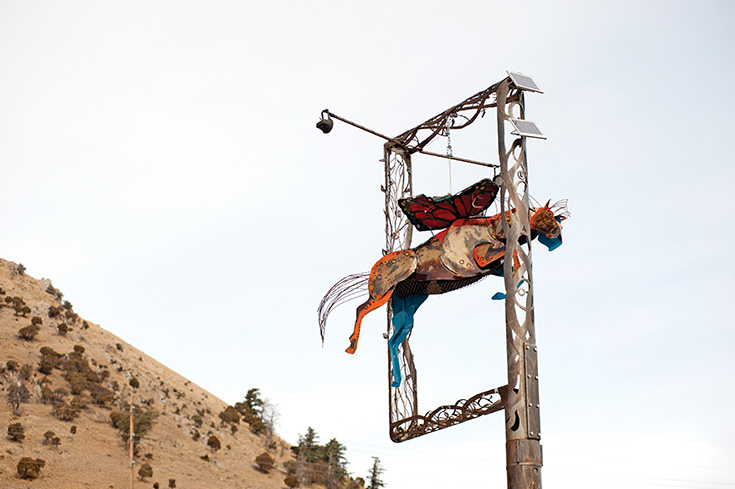
Reven Marie Swanson: One of two stops not on the pathways system, the ArtSpot is a program of the Center of Wonder. The current display is by Denver artist Reven Marie Swanson: “Rogan” lifts his colorful wings as if to soar over Snow King Mountain. The piece reminds viewers how horses lift our spirits and animate our Western dreams, whether traditional or contemporary.
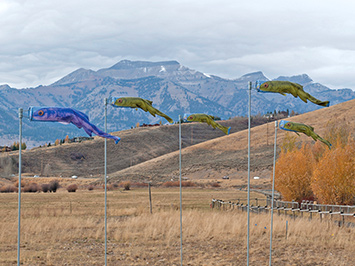
Sarah Kariko and SJK ArtLab LLC: Seven giant, colorful minnows hover at the entrance to the Indian Springs neighborhood. The acid-dyed, industrial-strength windsocks pay homage to the five endangered species of fish in Wyoming. One side exhibits a minnow’s external structure and appearance, while the other side shows a CAT scan of a minnow. The windsocks flutter in the breeze much like real minnows ride stream currents. “These fish live in a small, fragile habitat in the Greater Yellowstone Ecosystem,” Vermont-based artist and scientist Sarah Kariko says. “We are like them. We have this finite planet that has to be healthy in order for us to survive.”
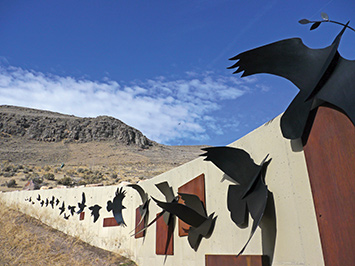
If you’ve ever wanted to soar with ravens, here is your chance. On the downhill return from the National Museum of Wildlife Art’s sculpture trail, you can fly with the corvids along the north retaining wall of the underpass. Savvy viewers will notice the stick in the lead raven’s beak, a nod from the artist to the bird’s intelligence and use of tools. Geraci notes that much of the art found on the pathways gives voice to overlooked species; it asks viewers to consider their role in nature. “By presenting a species and its current situations to us in a new way,” Geraci says, “artists invite viewers to make a connection. Whether that connection is fleeting or lasting is up to the viewer.”
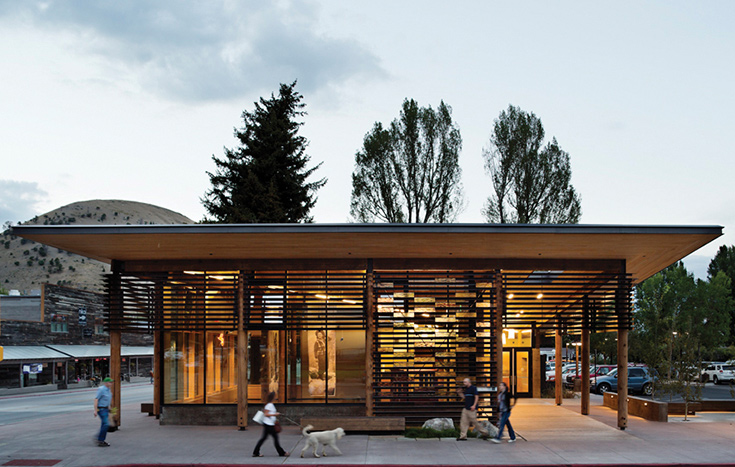
John Frechette and Carney Logan Burke Architects: In the lobby of Jackson’s new public restroom and information center, visitors bask in the glow of colorful glass bricks. Closer examination reveals the science embedded in the artful bricks: One wall contains the DNA pattern of a bison, the other shows the DNA pattern of a bear. “When I go to the [Grand Teton National] park, I end up taking kind of microscopic photos,” Frechette says. “I’m drawn to little close-ups of a rock in a riverbed or other little details, as opposed to the big landscape.”
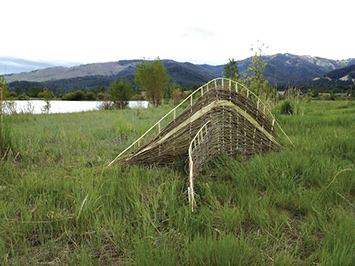
Meghan, Kathleen and Nora HansonDuring the Triassic-Jurassic extinction event, represented here in willow weaving, the dominant group of non-dinosaur “ruling lizards” disappeared, along with amphibians. Only one ruling lizard species survived—the ancestors of crocodilians. The Hanson sisters hope their dramatic outdoor exhibit encourages people to ponder our impact on the Earth.
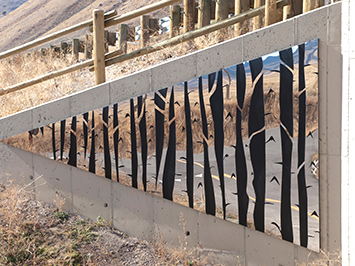
Don Rambadt: A dramatic example of how art can enhance otherwise-overlooked public spaces, three installations by Wisconsin artist Don Rambadt transform the pathways’ underpass to the National Museum of Wildlife Art from a dark tunnel into a place of learning and wonder. The stainless steel, mirror-polish aspen trunks reflect the National Elk Refuge in what Geraci calls “a never-ending natural experience.”
